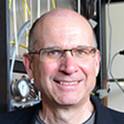The thermal profile of solvent liquefaction experiments must be well-controlled to generate data suitable for process scaling and technoeconomic analysis. Acknowledging the differences in small-scale batch systems compared to continuous commercial processes is important. In particular, many experiments have long heating and cooling periods, which influence rates of reaction in ways that would not occur in commercial continuous reactors. To overcome this problem, a novel semi-batch autoclave (SBA) system was built to rapidly heat reactants and cool products while maintaining constant pressure during solvent liquefaction experiments. In this study, the performance of the SBA reactor was compared to an isobaric conventional batch autoclave (ICBA) reactor in the solvent liquefaction of lignin in n-butanol. Heat transfer affected both the apparent reaction rate and measured product yields. Solvent liquefaction limited by slow heating gave the misperception that reaction rates were faster than was actually the case and promoted the formation of char-like solids. Experiments constrained by slow heat transfer are of limited use in process modeling and reactor design, which would otherwise result in undersized reactors for desired processing rates. The SBA system facilitates the design and scale-up of commercial SL plants as it approximates the thermal profile of a continuous system.
Available at: http://works.bepress.com/robert_brown/159/

This is a manuscript of an article published as Lindstrom, Jake K., Jessica L. Brown, Chad A. Peterson, Arpa Ghosh, Sean A. Rollag, Panos D. Kouris, Michael D. Boot et al. "A novel semi-batch autoclave reactor to overcome thermal dwell time in solvent liquefaction experiments." Chemical Engineering Journal (2020): 128074. DOI: 10.1016/j.cej.2020.128074. Posted with permission.